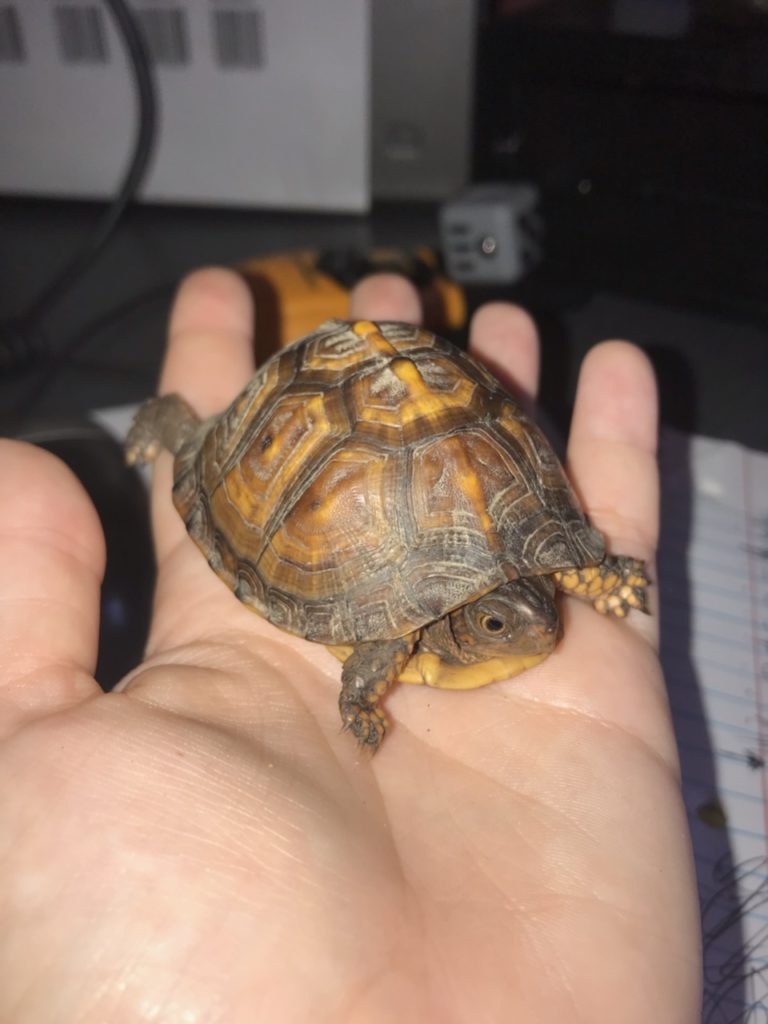Introducing Ruth

We have big plans for “Ruth,” the newest member of our animal education team. She received her name by popular vote from our Facebook and Instagram communities this week. Her name, chosen in honor of Supreme Court Justice Ruth Bader Ginsberg, may be a sign this tiny, juvenile box turtle will help influence important change.
The eastern box turtle is distinguished from other box turtles by the gold and orange markings on its shell, and the presence of four toes on its hind legs. These turtles are a common site in the eastern United States and even have the prestige of being North Carolina’s state reptile. (You can learn more about this species from the National Zoo’s website here.)
Adult box turtles have the unique ability to completely retract their limbs and shut their shells when they feel threatened thanks to a hinge on the bottom of their shell. This ability to completely close up into the safety of their hard shell makes it difficult for predators to do box turtles any harm when attacking. Despite their ability to protect themselves so well, the loss of habitat from construction projects, collision with cars on roads, and illegal collection for the pet trade have placed this reptile in a vulnerable conservation status and under threat of disappearing.
Although the eastern box turtle is not currently listed on the U.S. Fish & Wildlife’s endangered species list, they are endangered in several states, many of which enacted laws protecting this species. In 2003 North Carolina prohibited the commercial collection of these turtles. In 2015 eastern box turtles were listed as a conservation concern priority in the North Carolina Wildlife Action Plan. (You can learn more from the NC Fish and Wildlife commission here.)
Another two of our native education animals are also considered endangered and conservation priorities in NC, “Dundee” the American alligator and “Harry” the mole kingsnake. Ruth will join Dundee and Harry in helping to educate visitors and students about the role different animals play in our environment and the role we humans play in theirs.
